Negi Miso (Leek and Miso Sauce) is an excellent all-purpose condiment. Use it to marinate meat, dip vegetables and egg rolls, and enjoy on steamed rice! Its bright, aromatic, and savory flavors work wonders in Japanese or Asian recipes.
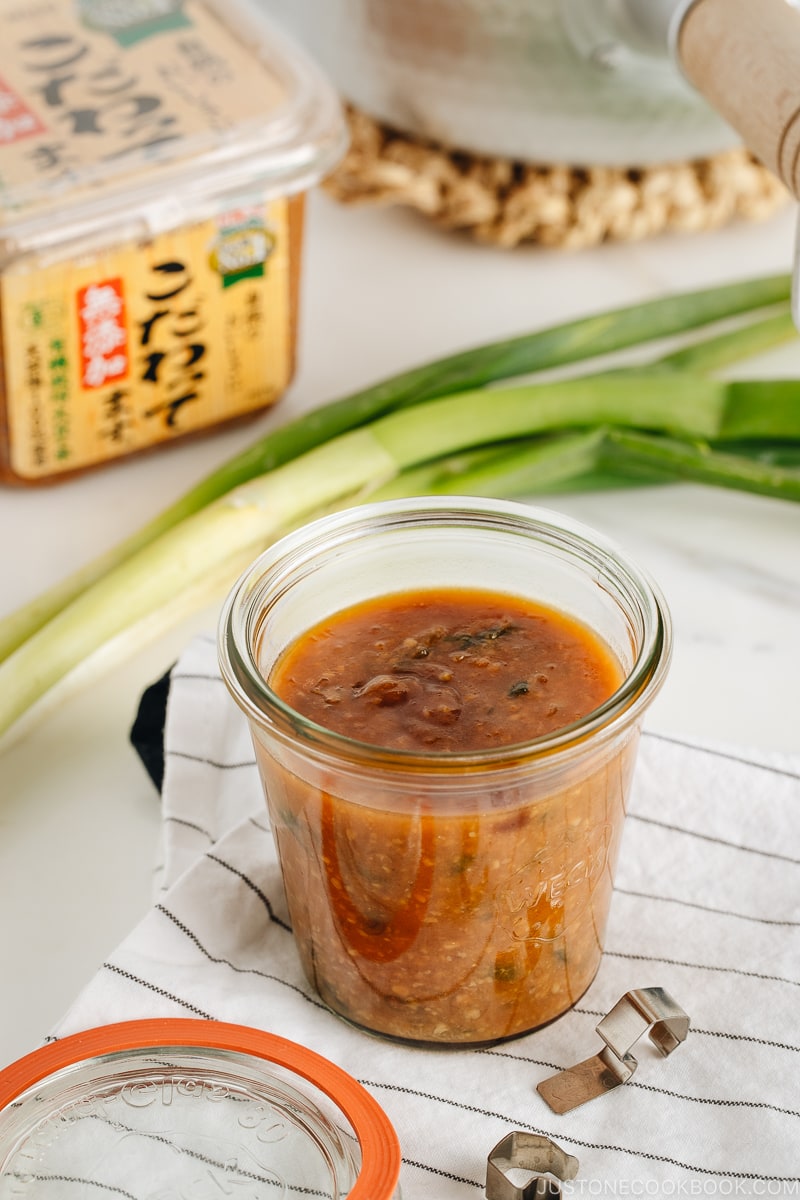
Whenever I set out to do my meal prep for the week, I try to make one or two homemade sauces and dressings to keep around in the refrigerator. They are so handy for everyday and emergency meals! And this Leek and Miso Sauce recipe called Negi Miso (ねぎ味噌) is one of my favorite ones to make.
I use the sauce as a marinade, dipping sauce, seasoning, or anything that is in need of a flavor boost. With only a few ingredients, you could easily it together in a flash and store for later use.
Table of Contents
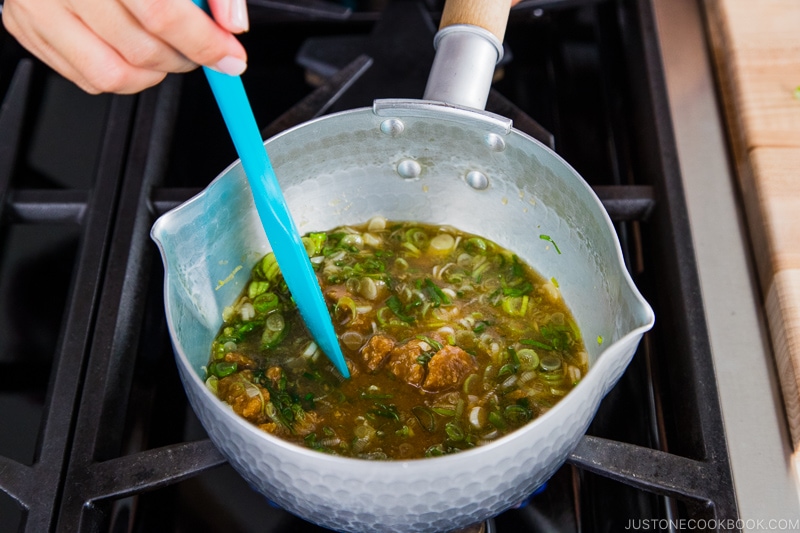
What is Negi Miso (Leek & Miso Sauce)?
Negi miso (ねぎ味噌) is a miso-based sweet and savory sauce. The main ingredients are miso paste and long green onions called negi in Japanese. It’s an all-purpose sauce that you can use in many ways, from stir-fried seasoning to vegetable dip and from brushing on grilled onigiri or tofu to marinating meats.
It’s versatile in the same way as pesto sauce in Western cuisine that you would use for a sandwich, noodles, or chicken. With a bright and herby flavor, negi miso is just as flexible as beloved pesto!
What is Negi?
The key ingredient that characterizes the sauce is negi (ねぎ, ネギ, 葱) or long green onions. They belong to the same allium species as scallions (or green onions) but are longer and thicker in size and do not form a bulb at the bottom. It’s somewhere in between leeks and scallions in thickness, texture, and taste.
You may also see them called naga negi or Tokyo negi in the market. If you can’t find negi in a Japanese or Korean grocery store, you can definitely use scallions/green onions or leeks or both (for texture and flavor).
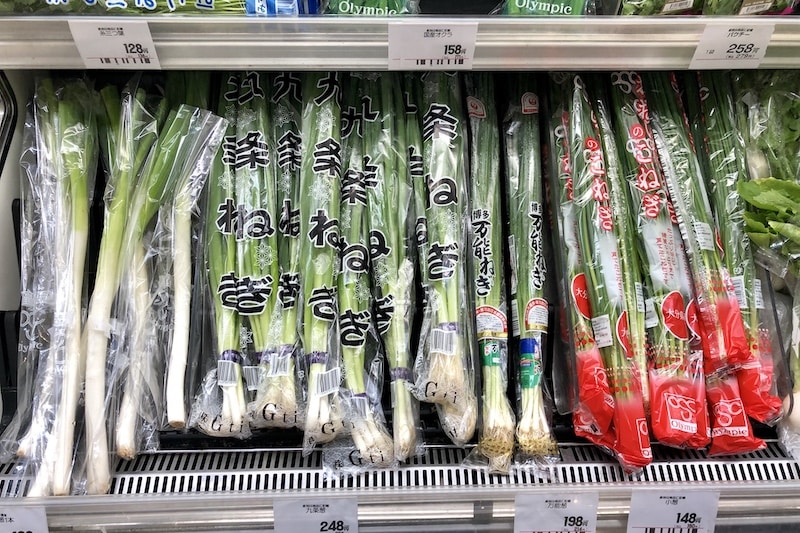
Different Varieties of Negi
There are different types of negi in Japan depending on the region. Some negi are more pungent and slightly bitter than others. You can soak them in cold water to mellow the flavor, if needed.
- Naga negi (長ねぎ) or shiro negi (白ねぎ) from Kanto region
- Kujo negi (九条ねぎ) from Kyoto
- Hakata Banno negi (博多万能ねぎ) from Kyushu region
- Asatsuki (あさつき)
- Wakegi (わけぎ) from western Japan
Ingredients for Negi Miso
- Tokyo negi (naga negi; long green onion) – read more below; you can substitute scallions/green onions, or a combo of leeks for texture and green onions for flavor
- toasted sesame oil
- miso
- sugar
- mirin
- sake
- soy sauce
How To Make Negi Miso
- Cut the negi (including the green part) into small pieces.
- Sauté the minced negi in sesame oil until wilted in a medium saucepan or frying pan.
- Add all the seasonings to the pan. Mix well and bring it to a boil.
- Reduce the heat and simmer until the sauce thickens. It’s done when you can draw a line on the bottom of the pan with a spatula.
Transfer the sauce to a sterilized jar and keep this sauce for up to 1 week in the fridge and 2 months in the freezer.
Miso – Japanese Fermented Soybean Paste
Miso (味噌) is a soybean paste that’s an essential condiment in Japanese cooking. In this recipe, there is no good substitute for miso. There are many different types of miso and you can read more on my ‘all about miso’ pantry page.
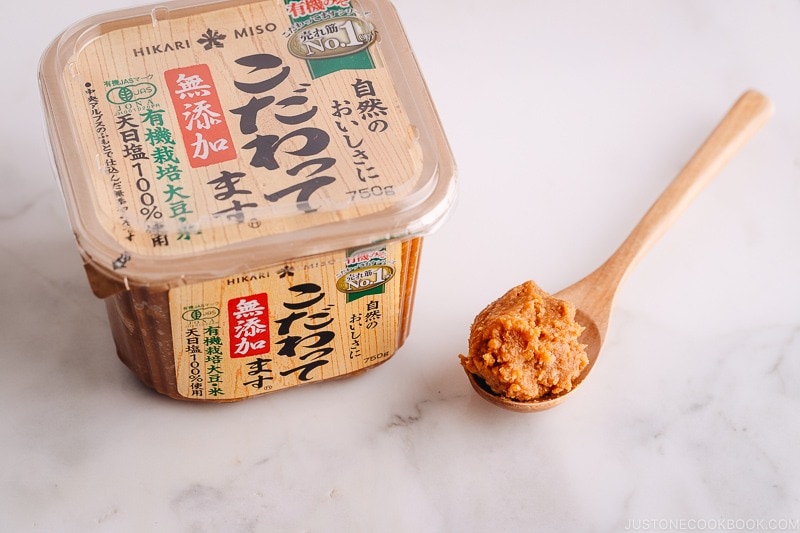
Which miso is the best? Today, I used a slow-aged red koji miso called “Kodawattemasu,” and it’s the #1 selling miso from Hikari Miso®. This miso has a rich and mature flavor with the full-bodied umami of soybeans and the sweetness of rice. It is free of additives and preservatives.
Kodawattemasu (こだわってます) in Japanese means “I’m particular (about the quality of miso and the miso-making process).” It may be hard to memorize, so just remember the green label with No.1 on the package!
Where you can buy Kodawattemasu by Hikari Miso®
- Japanese grocery stores like Nijiya, Mitsuwa, and Marukai
- Asian grocery stores including Chinese/Korean grocery stores
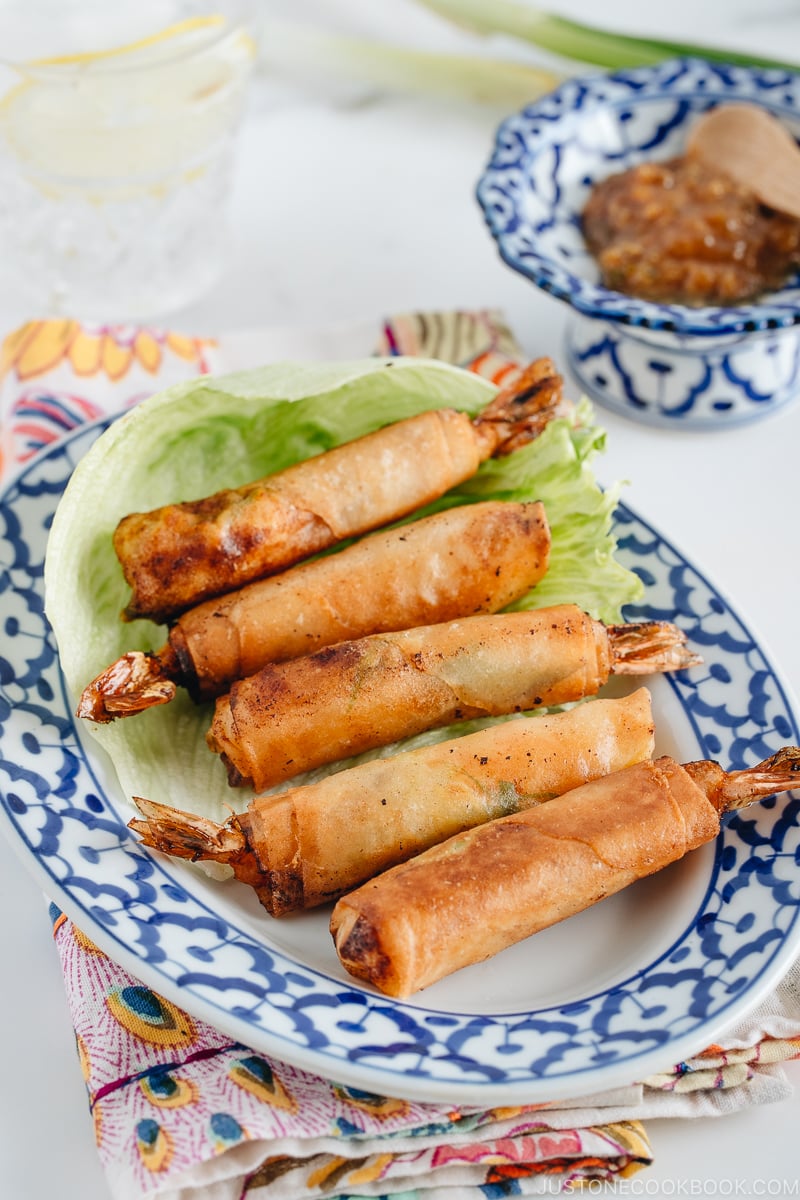
How To Use Negi Miso (Leek & Miso Sauce)
This sauce is an all-around sauce in my house. With a complexly sweet and salty flavor, it can really jazz up any bland dish, especially if you do a lot of Japanese or Asian cooking at home. Here are just some delicious examples:
- Use as a stir-fry sauce
- Add to rice balls as a filling or brush on Yaki Onigiri
- Apply to tofu, eggplant, daikon, and konnyaku (see my Dengaku recipe)
- Use as a dip for veggie sticks like cucumbers, carrots, and daikon
- Top steamed rice with a teaspoon of sauce
- Marinate meat and fish
- Use as a seasoning for Shrimp Egg Rolls
I hope you enjoy it!
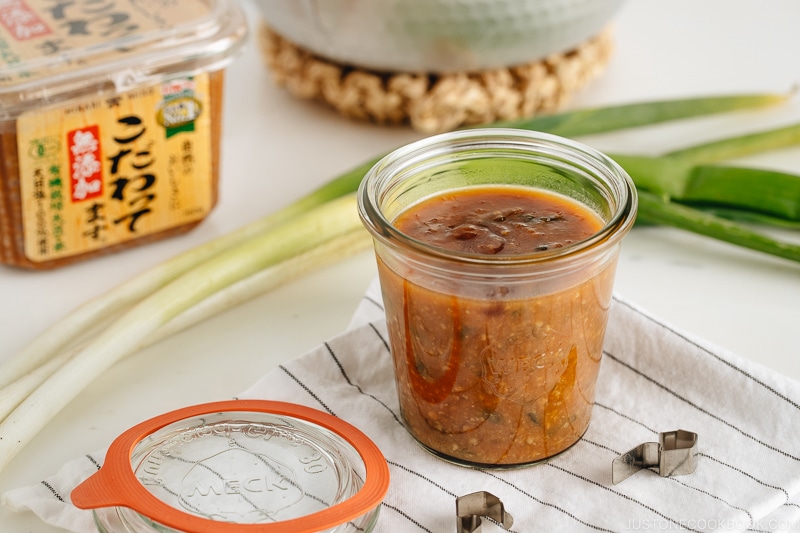
Sign up for the free newsletter delivered to your inbox and stay in touch with me on Facebook, Pinterest, YouTube, and Instagram for all the latest updates.
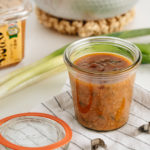
Negi Miso (Leek and Miso Sauce)
Ingredients
- 2 Tokyo negi (naga negi; long green onion) (2 oz, 60 g; you can substitute any of the following: 1 thick negi; 4–5 scallions/green onions; or a combo of leeks for texture and green onions for flavor)
- 1 Tbsp toasted sesame oil
Instructions
- Gather all the ingredients.
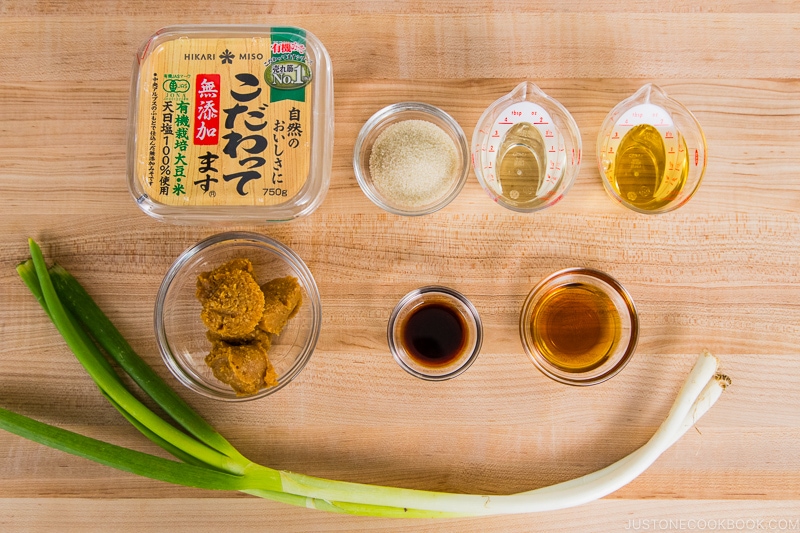
- Cut 2 Tokyo negi (naga negi; long green onion) into small pieces.
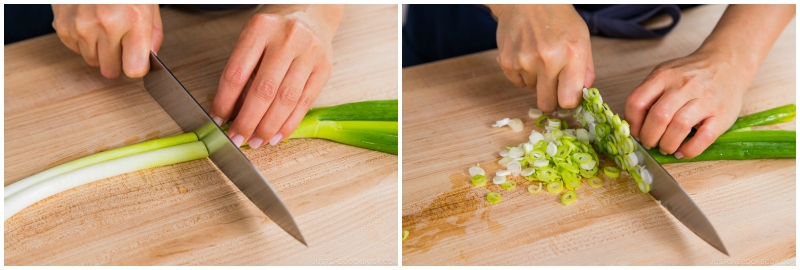
- In a medium saucepan or frying pan, add 1 Tbsp toasted sesame oil and then the minced negi.
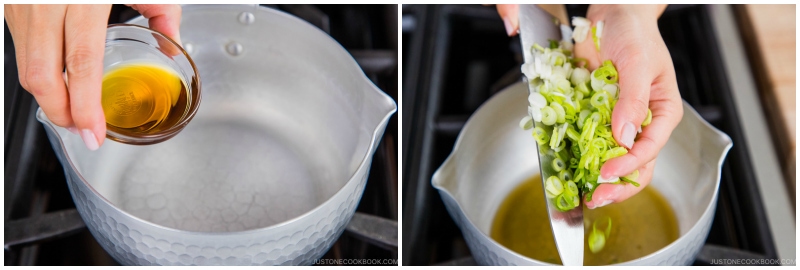
- Sauté the negi until wilted.
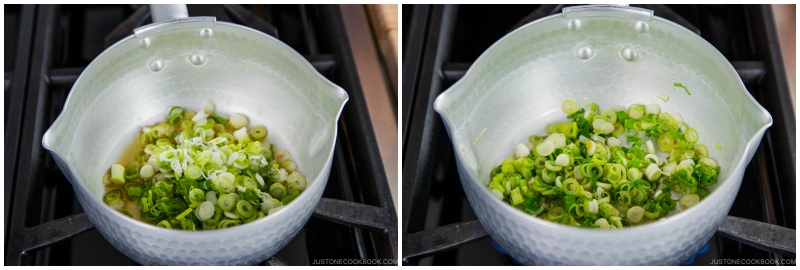
- Then, add all the seasonings to the pan: 5 Tbsp miso, 2 Tbsp sugar, 2 Tbsp mirin, 2 Tbsp sake, and ½ tsp soy sauce.
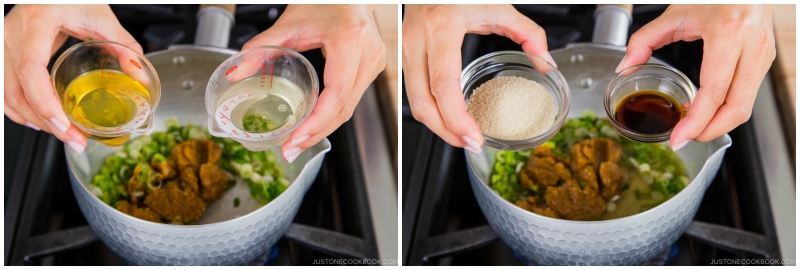
- Mix well and bring it to a boil. Once boiling, reduce the heat and continue to simmer until the sauce thickens.
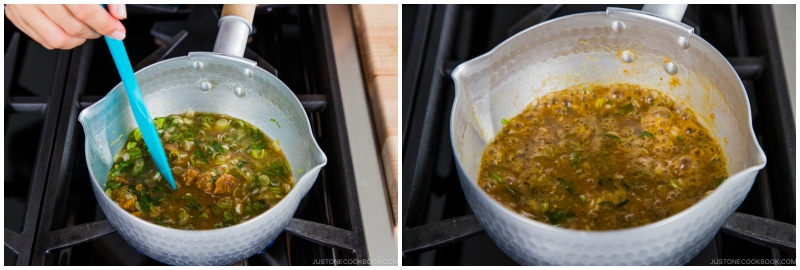
- When you can see the trail at the bottom of the pan when you draw a line with a spatula, it’s done. Transfer the sauce to a sterilized jar.
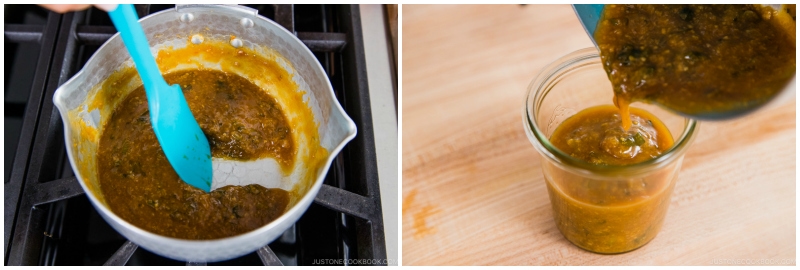
To Store
- You can keep this sauce for up to 1 week in the fridge and 2 months in the freezer.
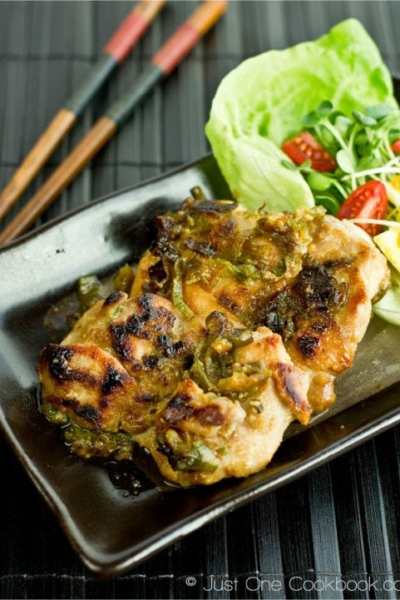
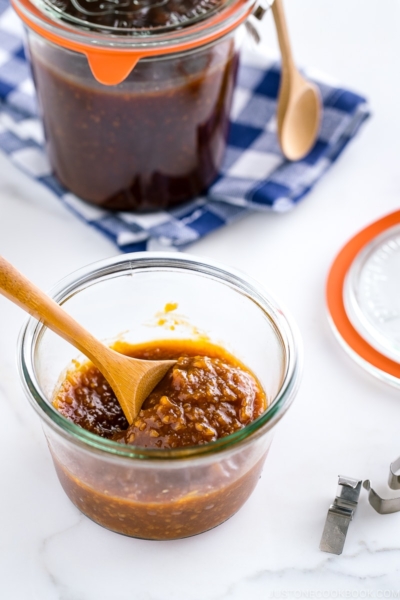
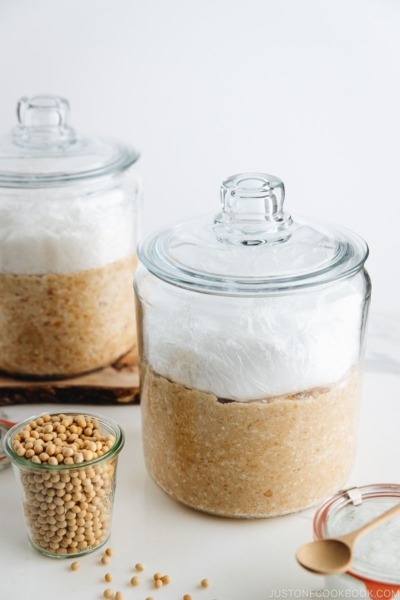
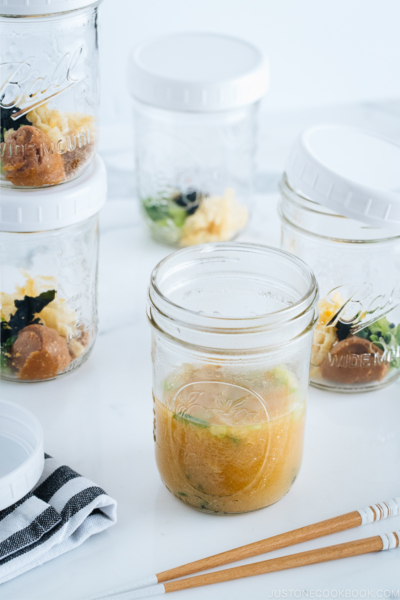




I think you may need to review the calorie count on this. It says it is 506 calories per serving, and there is no way it is that high considering the number of servings this recipe makes.
Hello Mark! Thank you for taking the time to read Nami’s post.
The recipe provided yields one cup of Negi Miso, and the nutritional information given is also for one cup, which is the serving size indicated in the recipe card.
We hope this information is useful to you!🙂
Unrelated to the recipe, but where did you get that glass jar?
Hi Karen! Here you go! https://www.amazon.com/dp/B01N1F2L3A?tag=onamzjusoneco-20&linkCode=ssc&creativeASIN=B01N1F2L3A&asc_item-id=amzn1.ideas.JD39FUPH6SRN&th=1
We hope this helps!☺️
This looks amazing! But I’m curious: On the Neji Miso Chicken recipe it says only to use the green part I believe. Is it the same for this recipe? It didn’t say thought the picture looks like it may indicated that.
Hi CJ! Thank you very much for reading Nami’s post and trying her recipe!
Nami used all of the Negi(long green onion) for this recipe.
Please slice them all.🙂 We hope you enjoy Negi Miso!
What a great idea! Will make this to have on hand. It will surely help make the cooking process faster.
Hi Amy! Thank you very much for your kind feedback!
We hope you enjoy this Negi Miso in many ways! Happy Cooking!
Hi Nami!
I looove your recipes, including this one! Can you share a recipe for making brown rice miso at home? I recently saw on TV (MasterChef Australia) that a Japanese lady had homemade miso that she fermented herself. I’d love to make miso at home too – do you know how to make it? I’d be so interested in an authentic Japanese recipe! And a tutorial on how to sterilise and safely store foods, my grandma used to preserve all kinds of foods from our garden but I haven’t dared to dive into preserving myself.
Thanks for always sharing tour amazing recipes!
Love from Australia!
Hi Lily!
Thank you very much for trying this recipe and for your kind feedback!
We currently don’t have the recipe on the site that uses brown rice koji to make miso. We’ll make sure to add the recipe to Nami’s list. Thanks for your request!
Meanwhile, please check here for the Homemade Miso recipe with white rice koji; https://www.justonecookbook.com/how-to-make-miso/ 🙂
Can you tell me if this miso has mushroom powder in it? Some miso does and being allergic to mushrooms I have to pass up miso in most cases when It is served at an oriental restaurant although I like it.
Info appreciated.
Aub.B.
Hi Aubrey! I’m not at home and can’t check the package currently… I’ll check when I get a chance. Their website doesn’t say much: https://hikarimiso.com/product/organic-miso/kodawattemasu/
This looks great! Can’t wait to try. Do you know are negi the same as korean dae-pa? I have a korean market that is much closer to me than the Japanese market that sells negi. I was wondering if there was a big difference between the korean and japanese versions?
Hi Mei! I had never used it before but have seen it on YouTue. They look very similar to me so I would definitely use them instead of going to the Japanese market to buy Negi. 🙂